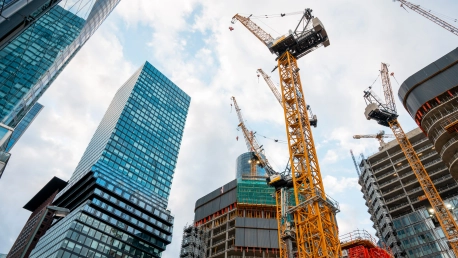The EU has updated its Energy Performance of Buildings Directive (EPBD) as part of the comprehensive REPowerEU Plan. This action underscores a commitment to curbing energy consumption and emissions, as the building sector is responsible for 40% of energy usage and a third of greenhouse gases in Europe. The new EPBD aims to expedite the transition to energy-efficient buildings. This move is not only critical for energy independence but also vital for environmental sustainability, aligning with the EU’s ambitions to tackle climate change through greener infrastructure. The directive necessitates renovations for existing structures to meet stringent energy performance standards, thereby leveraging advancements in energy efficiency to meet the EU’s broader climate objectives.
Enhancing Energy Efficiency in Buildings
Upgrading Building Energy Performance
Under the EPBD, EU member states are tasked with upgrading the energy efficiency of buildings, with particular attention to those with the lowest performance. The updated directive shifts the focus toward retrofitting older buildings and improving heating systems, insulation, and windows. These enhancements are not only ecologically prudent but also economical, as they can significantly cut down energy bills, alleviating the burden on residents, especially those facing energy poverty.Around 9.3% of EU citizens struggled to keep their homes warm in 2022, highlighting the severity of energy poverty in the region. The directive’s stipulations aim at combating this issue head-on by compelling the renovation of the worst-performing buildings, which will, in turn, contribute to reduced energy bills and increased comfort for the occupants. Furthermore, the directive supports job creation in the construction sector while ensuring rental housing remains affordable and protects tenants from unanticipated rent hikes.
Tailored Member State Approaches
The European Union’s EPBD grants member states the leeway to tailor energy efficiency measures to fit their specific local conditions. For homes, the aim is to cut energy use by 16% by 2030, then by 22% by 2035. Importantly, not every building will be bound by the same rules; for example, historical buildings may be spared from these requirements due to their cultural value and the potential difficulty in retrofitting them.The directive values proportionality, allowing countries to craft unique paths towards energy targets. A core aspect of the EPBD is the focus on revamping the least energy-efficient buildings first, as they represent the largest potential for energy savings and can significantly alleviate energy poverty. This approach aligns with the directive’s objective that 55% of the residential energy reductions should come from improving these underperforming structures.
Encouraging Sustainable Building Practices
Energy Performance Standards for New Constructions
Looking towards the future, the EPBD has encompassed ambitious goals for new construction as well. Publicly owned new buildings are required to be essentially emission-free by the year 2028, and by 2030, the same rule applies to all new buildings across the board. This progression towards zero on-site emissions for new buildings is a pivotal step in the EU’s journey to a sustainable and carbon-neutral future.The directive complements the broader REPowerEU Plan, which envisions a future where energy comes from clean, renewable sources, and energy efficiency is ingrained in every aspect of the building sector. In addition to the carbon-neutral goals, the EPBD encourages the implementation of solar panels, vehicle charging stations, and bicycle parking facilities, all supporting a transition to sustainable modes of transportation.
Focus on Non-Residential Buildings
The European Performance of Buildings Directive (EPBD) mandates progressive energy-efficiency improvements for non-residential structures. By 2030, upgrades are to focus on the bottom 16% of energy-consuming buildings in this category. This figure rises to 26% by 2033, ensuring a significant contribution to energy conservation from the commercial and industrial sectors. The changes brought by the directive are tailored to different buildings, aiming to enhance long-term energy efficiency and cut operational expenses.The EPBD’s strategic renovations align with the EU’s commitment to reducing its ecological footprint and promoting energy independence. It’s more than an environmental policy; it’s a keystone in Europe’s agenda to secure energy, lessen reliance on external fuel sources, and uphold a leading role in mitigating climate change. The renovation initiative for buildings, as part of this policy, is designed to ensure future constructions boast carbon-neutrality, thus bolstering an eco-friendlier economy.









